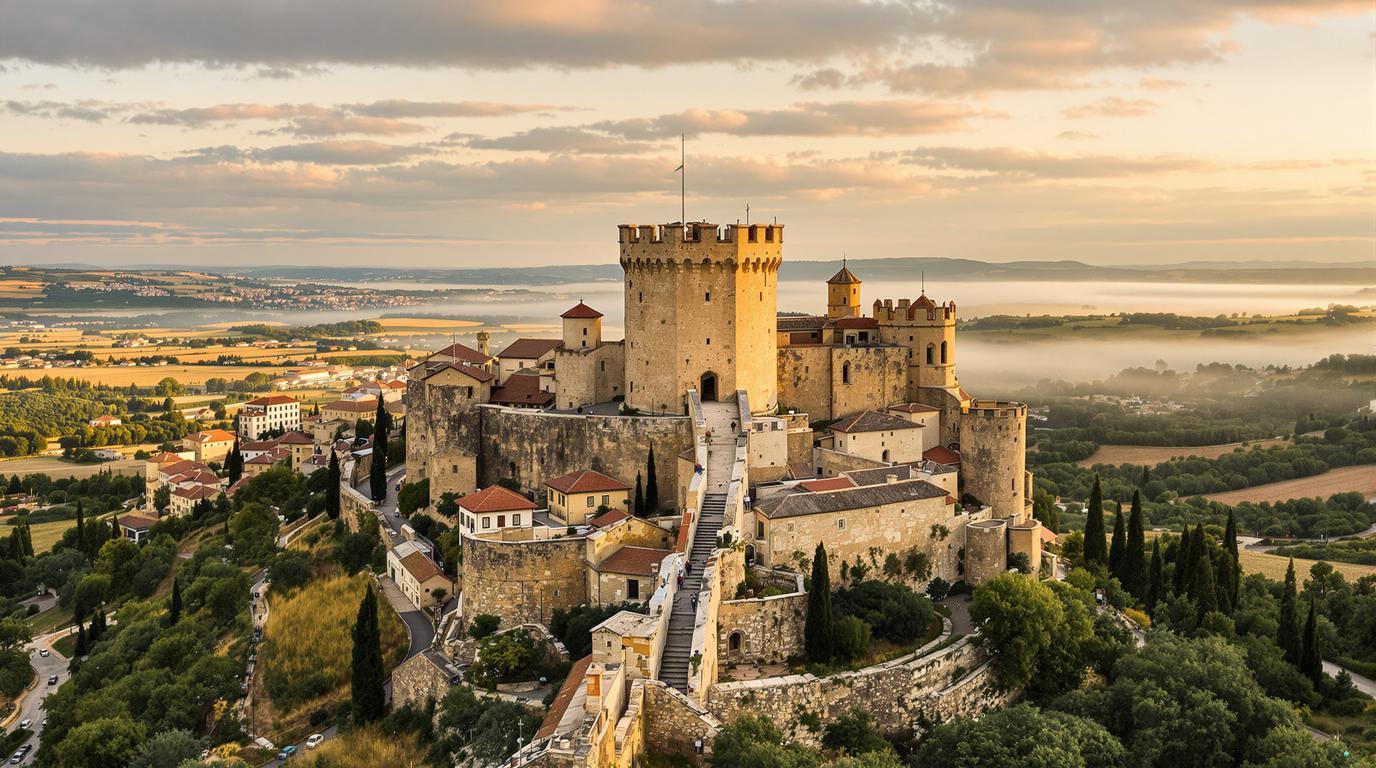This medieval French village whispers secrets of knights and religious wars from every ancient stone. Le Poët-Laval doesn’t announce itself with flashy landmarks or tourist throngs – instead, this officially designated “Most Beautiful Village in France” rewards those willing to climb its cobbled pathways with something increasingly rare in our modern world: pure, untouched medieval atmosphere.
A hilltop frozen in time
Perched dramatically in France’s Drôme region, Le Poët-Laval rises from rolling hills where lavender fields stretch toward distant mountains. Its 966 residents jealously guard their village’s authenticity by maintaining a strict car-free policy that instantly transports visitors centuries back in time.
“Our village breaths as it has for hundreds of years,” explains Marie Dumont, local historian. “When evening falls and the tourists leave, you can almost hear the footsteps of Knights Hospitaller echoing on these same stones.”
Knights, castles and religious upheaval
The 12th-century Château des Hospitaliers crowns the village, its imposing stone keep standing sentinel over the Jabron Valley below. Originally built by the Knights Hospitaller (a medieval Catholic military order), the fortress remains remarkably intact, offering visitors panoramic views that stretch across olive groves and woodland.
Religious history runs deep here. The village later became a Protestant stronghold, a history beautifully preserved in the Musée du Protestantisme Dauphinois. Housed in a 15th-century building converted into a temple, the museum chronicles the region’s tumultuous religious past much like other European villages with rich religious heritage.
Where cars dare not go
Unlike many historic villages that have compromised their character for modern convenience, Le Poët-Laval remains steadfastly pedestrian-only. Visitors park at the village entrance and explore on foot – a small inconvenience that pays immeasurable dividends in atmosphere.
The absence of vehicles allows the village’s 16th-century houses, ancient wells, and remnants of defensive walls to speak more clearly across time. Two medieval gates and semicircular towers remain, framing cobblestone streets so narrow neighbors could almost shake hands between windows.
A hidden art scene thrives
Surprisingly, this tiny medieval community harbors a vibrant cultural pulse. The Yvon Morin Art Centre regularly hosts exhibitions, concerts, and lectures, creating a fascinating juxtaposition of contemporary art against medieval stone – not unlike other vehicle-free creative havens worldwide.
“We’re not a museum piece frozen in amber,” says Jean-Pierre Laval, local gallery owner. “Our village breathes with contemporary life while honoring every stone of our heritage.”
Beyond the village walls
While the village itself captivates, the surrounding countryside offers equal enchantment. Provence’s famous lavender fields erupt in fragrant purple waves during summer months, creating scenes reminiscent of other breathtaking natural color displays.
Hiking trails wind through the region, including the historic Randonnée des Huguenots, which connects significant sites related to Protestant history. Cyclists claim the rolling hills surrounding Le Poët-Laval offer some of Provence’s most rewarding rides.
When to experience medieval magic
Late spring through early autumn offers the most rewarding experience. May through July brings lavender blooms, while August and September offer perfect weather for exploring narrow streets and enjoying sweeping valley views from stunning elevated viewpoints.
Winter brings a different magic – quiet contemplation among ancient stones rarely experienced by summer visitors. The nearby caves of historical significance offer year-round exploration opportunities.
Standing on Le Poët-Laval’s ancient ramparts as golden hour bathes weathered stone in honey-colored light, it becomes clear why travelers seeking authenticity are increasingly drawn to places that resist modernization. Here, history isn’t displayed behind glass – it lives in every footstep echoing across cobblestones walked by knights eight centuries ago.
